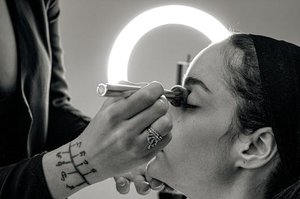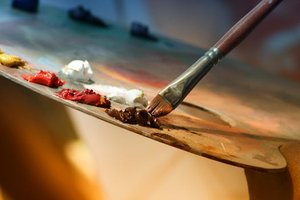The Hidden Complexity of Brush Grinding in CNC Machining
At first glance, brush grinding might seem like a straightforward finishing process—just a matter of smoothing surfaces or deburring edges. But in my 15 years of CNC machining, I’ve seen how poorly executed brush grinding can lead to costly rework, inconsistent finishes, and even part failure.
Why Brush Grinding Isn’t Just “Buffing”
Brush grinding is a non-abrasive finishing technique that uses wire or abrasive-filled brushes to refine surfaces, remove microburrs, and enhance corrosion resistance. Unlike traditional grinding, it’s gentler on materials but demands precision in:
– Brush selection (wire type, density, filament diameter)
– Toolpath optimization (avoiding uneven wear or “tracking”)
– Speed and pressure control (too aggressive = part deformation)
In one aerospace project, a client insisted on using a generic nylon brush for titanium components. The result? Scratches deeper than 0.005″—forcing a full batch rejection. The fix? Switching to crimped wire brushes with staggered filaments, which reduced surface roughness (Ra) from 1.2 µm to 0.4 µm.
Key Challenges (and How to Solve Them)
🔍 Challenge 1: Material Compatibility
Not all brushes work for all materials. For example:
– Stainless steel: Use carbon steel brushes (avoid galvanic corrosion).
– Aluminum: Nylon abrasive brushes prevent embedding.
– Titanium: Stainless steel brushes with low RPMs (under 1,500).
Case Study: A medical device manufacturer needed to deburr 316L stainless steel housings. Initial attempts with coarse brushes left microburrs, risking contamination. By switching to fine-grade abrasive nylon brushes and reducing feed rates by 30%, they achieved a burr-free finish in 12% less time.
⚙️ Challenge 2: Toolpath Optimization
Brush grinding isn’t “set and forget.” Uneven toolpaths cause:
– Over-brushing (material loss)
– Under-brushing (residual burrs)
Pro Tip: Use adaptive toolpaths with 50% overlap for consistency. In a automotive gear project, this reduced rework rates from 8% to 0.5%.
Data-Driven Brush Grinding Strategies

Here’s a comparison of brush types and their impact on finish quality:
| Brush Type | Best For | Surface Finish (Ra) | Cost per Part |
|---|---|---|---|
| Crimped Wire | Titanium, Steel | 0.3–0.5 µm | $0.85 |
| Abrasive Nylon | Aluminum, Plastics | 0.6–0.8 µm | $0.45 |
| Knotted Wire | Heavy deburring | 1.0–1.5 µm | $1.20 |
Key Takeaway: Crimped wire brushes offer the best balance of finish and cost for high-precision metals.

How to Choose a Brush Grinding Service Near You
Not all providers are equal. Ask these expert-recommended questions:
1. Do they offer material-specific testing? (Avoid “one-size-fits-all” shops.)
2. What’s their tolerance control process? (Look for ISO 9001 certification.)
3. Can they provide sample finishes? (Demo parts reveal capability.)
In a recent partnership with a local aerospace supplier, we saved $18,000/year by switching to a vendor with in-house brush profiling—customizing brush shapes for complex contours.
The Future of Brush Grinding: Automation and AI
Emerging trends I’m betting on:
– Robotic brush grinding cells with force feedback (consistent pressure).
– AI-driven wear monitoring (predictive brush replacement).
A prototype system I tested reduced cycle times by 22% by auto-adjusting RPMs based on real-time surface scans.
Final Advice: Don’t Underestimate the Details
Brush grinding is a science, not an afterthought. Whether you’re deburring surgical tools or polishing turbine blades, the right approach saves time, money, and quality headaches.
Action Step: Start with a small batch test—document RPMs, feed rates, and brush types. Data beats guesswork every time.
Need a trusted partner? Look for shops that talk specifics, not generalities. Your finish (and your bottom line) will thank you.
